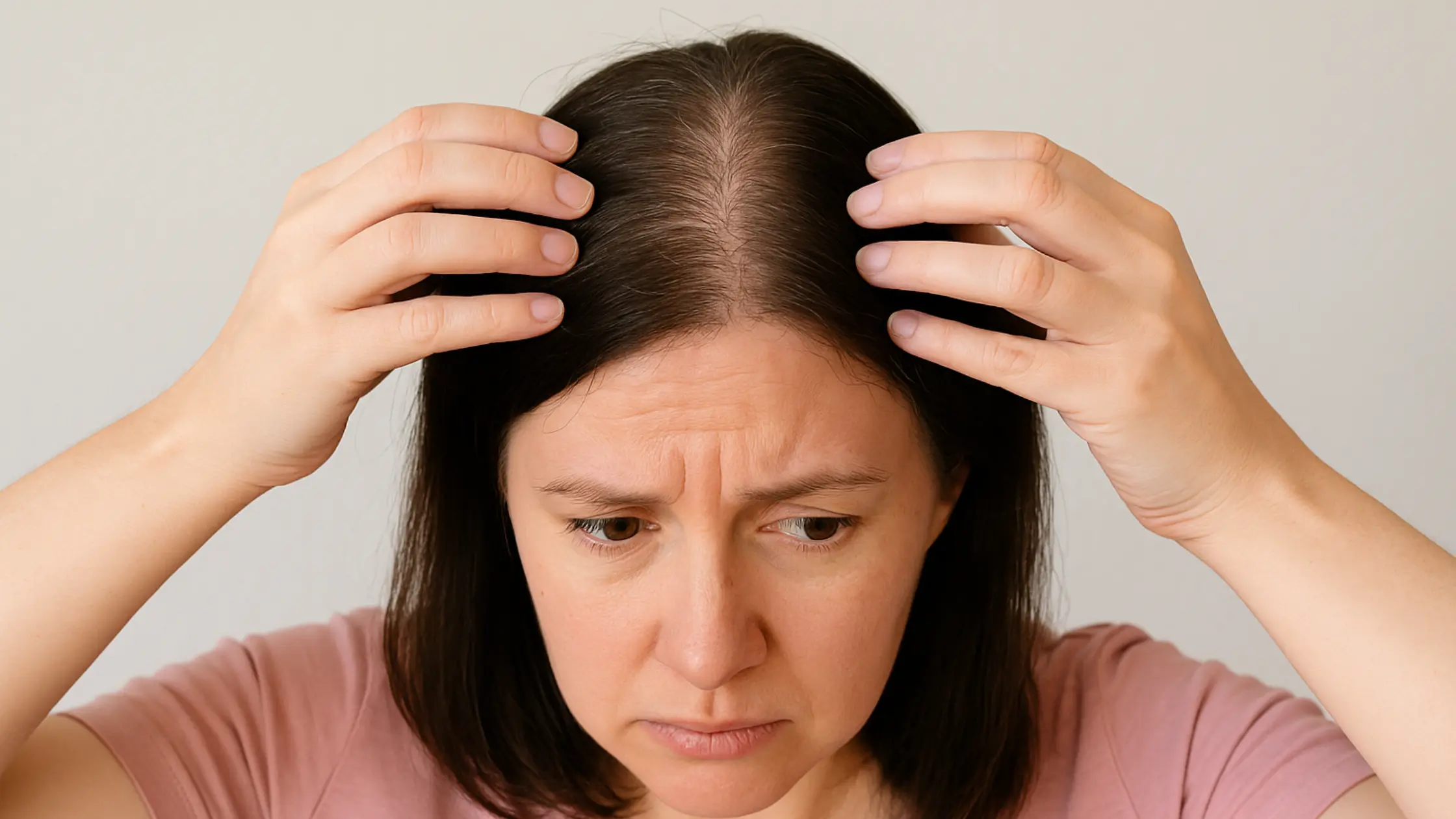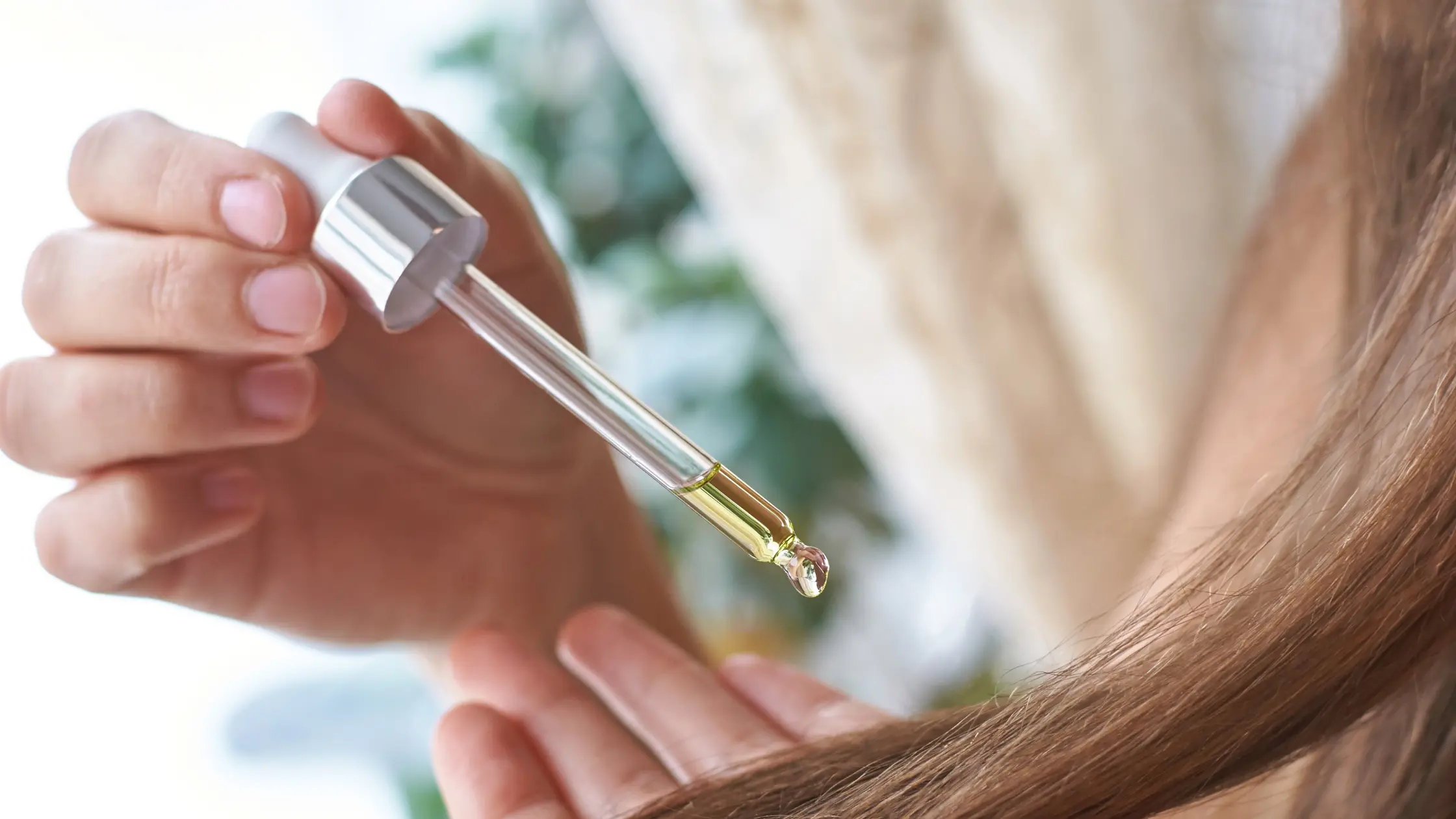If your ponytail feels thinner, your roots are lying flatter than usual, and your once voluminous hair now looks limp, you’re not imagining it. Hair thinning after 40 is one of the most common beauty concerns women face and it has less to do with stress or styling damage than you might think.
Once you hit your 40s, your hair begins a subtle but noticeable transformation. It loses density, bounce, and that effortless lift you may have taken for granted in your 20s.
The good news?
You don’t need to overhaul your entire hormonal system to reverse it. According to top trichologists and hair experts, several effective, science-backed treatments can help restore volume and body to aging hair without touching hormone therapy.
Here’s everything you need to know about why your hair changes after 40 and the proven, non-hormonal ways to reclaim that youthful bounce.
Why Your Hair Changes After 40?
Hair thinning in your 40s isn’t just about age, it’s about how age impacts the biological systems responsible for hair growth.
One of the main culprits?
The natural shrinking of your hair follicles over time.
“Everyone’s hair loses volume to a certain degree with age,” says Kingsley, leading trichologist at Philip Kingsley. “Just like we don’t have the same skin tone in our 40s or 50s as we did in our 20s, our scalp and hair follicles age too which directly affects the quality of hair they produce.”
As follicles shrink, they produce finer strands. Simultaneously, the hair growth cycle itself becomes less efficient. Hair stay in the resting (telogen) phase longer and the growth (anagen) phase gets shorter, resulting in less hair density overall.
Beyond that, reduced blood flow to the scalp and slower cell regeneration means the hair matrix, the place where new hair cells are formed doesn’t regenerate at its youthful pace.
The Role Of Hormones In Thinning Hair After 40
Hormonal shifts, particularly the decline of estrogen during perimenopause and menopause, can have a big impact on your hair and its volume. Estrogen is a hair-friendly hormone that keeps strands in the growth phase longer and reduces inflammation on the scalp. As estrogen levels drop, more hair follicles exit the growth phase early, leading to increased shedding and finer hair.
But here’s the silver lining, while hormonal changes are a big part of the picture, they’re not the only part and you might not need hormone-based treatments to fight back. Experts recommend targeting scalp health, follicle stimulation, and blood circulation as part of a smart, modern strategy to reverse the effects of aging hair.
Minoxidil
If there’s one name that comes up again and again when discussing female pattern hair loss, it’s Minoxidil. Originally developed as an oral blood pressure medication, Minoxidil is now one of the most widely recommended topical treatments for stimulating hair growth.
“Topical Minoxidil is generally the most effective non-hormonal treatment for female pattern hair loss,” says Kingsley. Applied directly to the scalp, it works by widening blood vessels and increasing blood flow to hair follicles, essentially creating a more nourishing environment for hair to grow.
But it’s not a quick fix.
Most users need to apply it consistently for at least two to four months before seeing visible results and that’s just the beginning. “Minoxidil maintains regrowth, meaning if you stop using it, the regrown hair can fall out within three months,” explains Kingsley.
Micro-Needling For Hair Growth
If you’re willing to go a step further, micro-needling may be your secret weapon. It works by creating tiny punctures in the scalp, which trigger the body’s healing response and stimulate growth factors. “Micro-needling may help, but I would suggest having it done by a dermatologist to avoid damaging your scalp,” advises Kingsley.
This treatment is often paired with Minoxidil to enhance absorption and noticeable results. While clinical studies are still evolving, early data and anecdotal reports suggest this combination can help reawaken dormant follicles.
Natural Topical Alternatives: Melatonin, Caffeine, and Peptides
Not ready for medical-grade interventions? There are natural alternatives that support scalp health and hair regeneration, even if they’re not quite as potent as Minoxidil.
“Topical melatonin, caffeine, and peptide blends also work well when dealing with hair thinning after 40,” says Kingsley. Melatonin, known for regulating sleep, has also shown promise in supporting hair growth by acting as a powerful antioxidant and protecting against oxidative stress on the scalp. Caffeine stimulates circulation to the follicles, while peptides support protein-building processes needed for hair strength.
While results may take longer to show, these ingredients are ideal for those looking for a gentler, hormone-free approach to volume restoration.
Lifestyle Shifts That Help
Of course, no product can work miracles if you’re not supporting your hair from within. After 40, internal health becomes even more important in maintaining full, healthy hair.
Make sure you’re getting enough protein, iron, and vitamin D, all essential for hair growth. “Even a slight deficiency in iron can trigger shedding,” warns Kingsley. Omega-3 fatty acids, found in fatty fish and flaxseed, also support scalp hydration and circulation.
Stress reduction, regular sleep, and avoiding overly tight hairstyles that tug at fragile strands all contribute to long-term hair health. And let’s not forget the basics: gentle brushing, sulfate-free shampoos, and regular scalp massages or scalp facials along with anti-hair fall serum go a long way in boosting blood flow and preventing unnecessary breakage.
Scalp Care Is Crucial
We invest so much time and money into skincare, but the scalp? Often overlooked. But as experts remind us, the scalp is skin too and it ages. Regular scalp exfoliation helps remove product buildup, dead skin, and excess sebum, all of which can clog follicles and slow growth.
Look for scalp serums containing gentle exfoliants like salicylic acid or tea tree oil. Massaging these in not only cleanses the scalp but improves blood flow making it easier for nutrients and treatments to reach the follicles.
The Bottom Line: You Can Bounce Back
Hair thinning after 40 may feel like an inevitable part of aging, but it doesn’t have to define your look. With smart, non-hormonal strategies from Minoxidil and micro-needling to natural topicals and scalp TLC, you can absolutely restore fullness, body, and bounce.
Upgrade your scalp routine, introduce clinically backed topicals, and nourish your hair from the inside out. With time and consistency, your hair will remember how to bounce back no hormones necessary.








